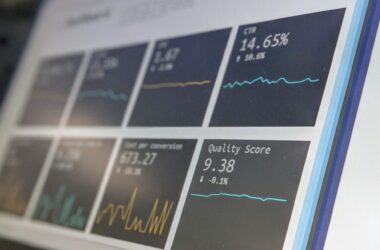Introduction:
In the digital age, we are witnessing an unprecedented explosion of data. Every click, swipe, and interaction generates vast amounts of information that, if harnessed effectively, can provide invaluable insights and drive informed decision-making. This is where the fields of data science and analytics come into play. By utilizing advanced technologies and statistical techniques, data scientists and analysts can extract meaningful patterns and trends from data, empowering organizations across industries to optimize their operations, enhance customer experiences, and achieve strategic objectives. In this blog post, we will dive into the world of data science and analytics, exploring their significance, key methodologies, and real-world applications.
Understanding Data Science:
Data science is an interdisciplinary field that combines elements of mathematics, statistics, computer science, and domain knowledge to extract insights and knowledge from complex and often unstructured data sets. It encompasses a wide range of techniques and methodologies, including data mining, machine learning, predictive analytics, and data visualization.
Key Methodologies in Data Science:
- Data Collection and Preparation: Data scientists begin by identifying and collecting relevant data from various sources. This can include structured data from databases, unstructured data from social media or text documents, and even data from Internet of Things (IoT) devices. Once the data is gathered, it undergoes a rigorous process of cleaning, transforming, and preparing it for analysis.
- Exploratory Data Analysis (EDA): EDA involves examining and visualizing the data to identify patterns, correlations, and outliers. This process helps data scientists gain initial insights into the data and formulate hypotheses that can be further explored.
- Statistical Modeling and Machine Learning: Statistical modeling and machine learning algorithms play a crucial role in data science. These techniques are used to build predictive models that can make accurate forecasts, detect anomalies, classify data, or uncover hidden patterns. Popular algorithms include linear regression, decision trees, random forests, and neural networks.
- Evaluation and Interpretation: Once the models are built, data scientists evaluate their performance using various metrics and validate them against test datasets. Interpretation of the results is a critical step to ensure the insights derived from the data align with the organization’s objectives and can be effectively communicated to stakeholders.
Understanding Analytics:
Analytics is the process of discovering, interpreting, and communicating meaningful patterns and trends from data to guide decision-making. It encompasses a broader spectrum of activities, ranging from descriptive analytics (what happened) to diagnostic analytics (why it happened), predictive analytics (what will happen), and prescriptive analytics (what action to take).
Key Methodologies in Analytics:
- Descriptive Analytics: Descriptive analytics focuses on understanding historical data and summarizing it through visualizations, dashboards, and reports. It helps organizations gain a comprehensive view of past performance and identify areas for improvement.
- Diagnostic Analytics: Diagnostic analytics aims to explain why certain events occurred by drilling down into the underlying factors. This involves using advanced analytical techniques to investigate correlations, causal relationships, and root causes.
- Predictive Analytics: Predictive analytics leverages historical data to build models that can forecast future outcomes or behaviors. By using statistical modeling and machine learning algorithms, organizations can make data-driven predictions and optimize their decision-making processes.
- Prescriptive Analytics: Prescriptive analytics takes predictive analytics a step further by recommending the best course of action to achieve desired outcomes. It considers various constraints, scenarios, and potential actions to provide decision-makers with actionable insights.
Real-World Applications:
Data science and analytics have found applications across diverse industries, transforming the way organizations operate. Here are a few examples:
- Healthcare: Data analytics enables healthcare providers to improve patient outcomes by identifying disease patterns, predicting readmissions, and optimizing treatment plans.
- Finance: Financial institutions use data science techniques to detect fraud, assess credit risk, and create personalized investment recommendations for clients.
- Retail: Data analytics helps retailers understand customer preferences, optimize inventory management, and personalize marketing campaigns for higher conversion rates.
- Manufacturing: Predictive analytics enables manufacturers to optimize maintenance schedules, reduce equipment downtime, and enhance supply chain management.
- Transportation: Data science is revolutionizing the transportation sector by optimizing route planning, predicting traffic patterns, and improving logistics operations.
Conclusion:
Data science and analytics have become integral to modern decision-making processes, providing organizations with a competitive edge in today’s data-driven world. By leveraging the power of data, organizations can unlock valuable insights, optimize processes, and make informed decisions to drive growth and innovation. As the field continues to evolve, the possibilities are endless, and the demand for skilled data scientists and analysts will continue to rise. Embracing data science and analytics is no longer an option but a necessity for organizations aspiring to stay ahead in the digital era.
We would love to hear your thoughts on the fascinating world of data science and analytics! Have you experienced the transformative power of data-driven decision-making in your personal or professional life? How do you envision these fields shaping the future of industries and society as a whole? Share your insights, opinions, and experiences in the comment section below. We look forward to engaging in a vibrant discussion with our readers!









